America 250: Anza & the Galvez Family
Spanish men, women and children scaring the crap out of British Powers-That-Be 1774-1783
July 4, 2025
After marching in my local July 4th parade today, I went hunting for reminders of Spanish subjects who two hundred years ago scared the wits out of British King George III and his Parliament. Funny, as a California school kid 50+ years ago my State-approved English-language-only history textbooks had lots about the glamorous young French aristocrat Lafayette but virtually nothing about these Spanish gentlemen: Juan Bautista de Anza plus Bernardo Galvez, his uncle and his father.
All I was taught growing up was “DeAnza” was the name of a new local community college with, as I recall, a logo of a Spanish conquistador in a curvy metal helmet with feathers like a Roman Empire soldier or a Swiss Guard at the Vatican. Learned last winter from historical illustrator David Rickman those 16/17th Century helmets were something Anza never wore. For him a tricorn hat like George Washington or a black felt hat with a flat top and wide flat brim with a bright red hat band. Bernardo Galvez? It was only months ago I learned he drafted the Treaty of Paris which ended the American Revolution War.
Search Objective #1 - Hunt for the USA Bicentennial Anza Expedition marker in Los Altos Hills, California
A few weeks ago I bought on EBay a report about the official USA Bicentennial 1975-76 reenactment of the 1775-6 Anza Expedition detailing events from a big horse parade in downtown Mexico City in Summer 1975 to a Spring 1976 waterside play performed by professional actors at San Francisco Presidio. Ah! A photo of a 1976 Anza metal marker being dedicated in Los Altos Hills, an executives’ estate community founded by the early 1920s by most of the top brass of Southern Pacific Railroad eager to escape San Francisco’s summer fog at their office headquarters.
I recalled erroneously seeing that 1976 Anza marker many times by the Los Altos Hills town hall but correctly seeing them dotted around coastal towns with 1769-1834 Spanish-Mexican Franciscan missions But, the town hall had new hardscape and gardens installed around 10 years ago and the marker was not there earlier this week. No one inside the town hall days ago knew where it was. A town pathway expert was consulted. Best guess if it was not sold for scrape metal value is it’s somewhere in the town’s “corporate” maintenance yard by Interstate-280. About a dozen people are now on the search! Odd for a big concrete plinth with a big heavy metal marker to go missing.
CODA: Learned late on 7/5/2025 the plaque had briefly been at Edith Park until a town resident named Les Earnest (died August 2024) made it his mission to have the plaque removed for being historically in his opinion, “rubbish.” More than a dozen people are now on the search including many alive in 1976 who know the whole missing-plaque saga as well as some insiders’ info how the Anza Trail became recognized in 1990 by Congress involving a war room of SF Bay Area lobbyers working in a San Jose hotel conference room. The consensus is the plaque is most likely inside the town’s corporate yard “vault.”
Meanwhile a short time after 1976 in California any “Spanish” (cough, “white,” cough “Catholic”) “conquistadores” or anyone accused of “oppressing” or “exterminating” First Peoples has been increasingly worthy of being thrown into the dustbin of history or held up as a 100% “He-is-Evil/Despicable!”teaching moment. Forget bothering to dust off and read any original documents and stories from many different perspectives - with corroboration - to learn what really happened in 1776. Never teach kids now that Anza got 240 people, mostly 30 families with small children from very poor and dusty played-out silver mining towns in Mexico all the way to California plus over 1,000 head of livestock with only one human death: a Spanish mother in childbirth. Not one “Indian attack” once they got deep into Arizona thanks to Anza’s lifelong overwhelmingly peaceful relationships with the native people of present day Mexican states of Sonora and Sinaloa plus New Mexican and Arizonan pueblo peoples and the Pimas.
But not good relations with all peoples. Thanks to Spanish horses arriving in Mexico in 1519 and then migrating wild and ever more frequently being stolen by Indian raiders from the north for “sweet” meat and transport, horses got to the Apache, Cheyenne, Comanche, and Kiowa nomadic peoples by the 1600s. Those First People quickly became outstanding horse warriors after millennia of having only humans and dogs as beasts of burden. Their lifestyle depended on hunting as well raiding from Indians who farmed. They prevented the further northwards advance of the Spanish Empire on the North American Continent until 1769 when the Spanish found a coastal land route to California and in 1774 Anza with crucial help from a California Indian named Sebastian Taravel (Tarabel) who found, while escaping eastwards from San Gabriel Mission in California, an overland route across the Sonoran desert using small water holes.
Anza’s 1775-6 Expedition with settlers included 5 scouts and interpreters from the Pima, Yuma, Cajuenchi, and Nifora. An expedition as hazardous and crucial historically as that of Lewis & Clark to the Pacific Northwest. An era with no Star Trek “Prime Directive” forbidding interference with “less advanced” cultures. A violent time of constant wars in Europe over who has the strongest navy, who controls which lucrative overseas colonies, and whose state religion is the most powerful and influential.
The Stone Age hunter-gatherers of California in 1776 did not have a chance to avoid being assimilated into European culture. If not by the formidable Spanish Inquisition apparatus and the still powerful Spanish Army and Navy then by the Russians, British or French who were all by the 1770s sailing around the Pacific Ocean looking for lucrative trade goods and new lands to rule. Like Star Trek’s Borg: “Resistance is futile.”
In 1775-6, the notion a colony of a European monarchy such as Nueva España in north America or the British 13 Colonies could ever by force of arms win independence was a total joke in the capitals of Europe. Even sillier in that era was the idea “backwards” natives would not benefit - all things considered - by becoming taxpaying European colonial royal subjects. Delusional wishful thinking as it quickly turned out.
No room in my grammar and high school history books for any nuanced stories. For example, on Anza’s expedition with hundreds of settlers was four year old María Ysidora Tapia. Her mother was mostly a Sinoloan Yaqui Indian with some African forebears. María Ysidora had 8 siblings on that trip. Once in San Francisco and grown up she got married. One of her children, Juana de la Trinidad Briones de Miranda, she taught to became the leading midwife and curandera (healer) in San Francisco. Juana next added becoming a vegetable and dairy mogul and with those profits bought the Rancho de La Purissima Concepcion from a mission indian, 1,000s of acres of land which today covers much of Palo Alto, Los Altos and Los Altos Hills.
Search Objective #2: Traces of Juana Briones
Well! Right there at the parade’s start at Los Altos Hills town hall is the Purissima Hills Water company from which most northern Los Altos Hills residents get their water. Three ponies stood outside by Purissima’s water faucets (for people and dogs) wearing halters and munching small alfalfa flakes under shade trees, their coats all slick and ready to walk in the parade, tails decorated with red, white and blue things. At the parade’s end the ponies and their people posed for photos. Equines are magnets to kids of all ages.
I drove to see if the pathway guy’s theory the Anza plaque was at a specific corner: Fremont and Miranda. Nope. Drove up Manuella to get to the site of Juana Briones’ adobe rancho home.
Up to see the view of the East Bay hills on Viscaino named for Sebastián Vizcaíno, a Spanish explorer who in 1602 mapped San Diego and Monterey bays. He never found the very narrow entrance to San Francisco Bay. Countless roads here are named for Spanish people.
Over to the Stanford Trust lands with cattle grazing on golden dry chaparral studded with oak trees. Past a Tesla outpost flying a big USA flag. Snapped photos on Deer Creek Road at two of the many horse boarding facilities on Stanford land. One has a circular old Mexican rodeo-style cattle gathering ring or a cattle cutting horse training ring. I closed my eyes and saw Juana Briones at her last cattle roundup nearby where she was trampled to death by stampeding cattle close to the then “Mayfield” train station, now the California Avenue Caltrain stations with frequent electric commuter trains and one daily early morning diesel freight train
Downhill on Page Mill Road to Palo Alto’s El Camino Real (The Royal Road) which runs southbound all the way to the 1730 Jesuit mission in San José del Cabo in Baja California. Took at Oregon Expressway a photo of a 1920-40s “Mission Bell” roadside marker. Those were sold, as well as mini ones, to raise cash to restore old Alta California Franciscan mission churches which had fallen into ruin. The “Romance” era of the California Franciscan missions with the best selling novel “Ramona” and movies about Zorro (The Fox), the masked mythical mash-up of the Scarlett Pimpernel and Robin Hood from Old Spanish Californio Days.
Northbound on El Camino Real to see another Mission Bell on the corner of Embarcadero Road which used to lead to the local bay port where sailing ships and row boats embarked cargo and passengers. About 50 people stood on the 4 corners yelling and waving signs. Maybe 1-2 of each 10 cars driving by tooted in support. USA flags were being flown upside down on this July 4, 2025 afternoon. A “No Kings” printed yellow sign by designer/artist Michael Kors. Lots of homemade signs. Mostly Caucasians, average age above 50. Overwhelmingly female. Two Grateful Dead t-shirts. I found them ironic with their signs blasting “oligarchs” and “kings” when right there on that corner behind thick tall trees is Stanford University’s football stadium where the head football coach is the highest paid “faculty” member while the University trust rakes in massive TV (and likely also online betting) income from the college football players without paying any income tax being an “educational” trust. How many of those protesters have a Stanford degree or a paying job on that Ivory Tower campus? But, hey! My overwhelming feeling seeing those protestors was “Yay, Free Speech!! ‘Merica! WHOOT!!!”
Note the name of the entrance road to Stanford: Galvez. At Stanford, his name means the biggest paved paid parking lot close to Stanford football stadium. Bernardo Galvez has a portrait in the USA Capitol building as an American Patriot for having led the Spanish Army and Navy between Florida and Louisiana plus the Caribbean during the American Revolution. He kept the British out of New Orleans and was ready to launch an attack on British Jamaica when the British agreed to peace talks after the Battle of Yorktown.
I wonder from whoever made this poster what he or she thinks about 1776 and 2024 immigrants from Sonora and Sinaloa as well all those who helped them come to the lands of the USA.
The ultimate in irony for June-July 2025 on July 4, 2025
Search Objective #3: El Palo Alto’s Anza marker
Walked up the dirt path along the old SP train tracks to see El Palo Alto
(The Big Stick), the remnant of a double-trunked redwood tree whose height was first measured by Franciscan Friar Pedro Font in March 1776 under the direct supervision of Anza. I’d swear I saw many times a 1976 Bicentennial Anza marker by that tree but not there today. Just two suspiciously fake rocks made from some kind of flexible polymer covering two lumpy things both about the size of the Anza marker and plinth. Lots of signage but none mentioned Anza or Font. In 1976, a reenactor dressed up like Font used the exact same kind of surveying equipment he would have had to measure the tree. A Hewlett Packard engineer used a laser theodolite. They got the exact same measurements. Progress from 1776 to 1976!
(Part 2 soon for more on the Galvez men)
****’
CODA: On the July 1, 2025 Feast Day of St. Junipero Serra, I began my Anza 1976 plaque hunt on the ground. Serra in 1776 was ensconced at his brand new Carmel Mission as Anza and Font were measuring El Palo Alto and fighting fleas on the San Francisco mid-Peninsula foothills road, an old Indian trail, known now as Alameda de Las Pulgas (The Fleas). After my bust on the ground in Los Altos Hills, I bailed to online. Found fast info on an Anza marker nearby on a Santa Clara City Hall’s lawn. Santa Clara, a.k.a. St. Clare, was a follower of St. Francis of Assisi when he was alive. He started the Franciscan order of mendicant friars and got the Pope’s approval for it in 1231. 2031 is the Franciscans’ 800th anniversary. St. Clare started what is now known as the Poor Clares. While the Franciscans focus on missions and evangelization her order is cloistered with an outpost at the old Gibson estate on Natoma in Los Altos Hills just north of Foothill Community College. If Anza today is too politically toxic for a plaque about him on any Los Altos Hills’ town-owned grounds, the Poor Clares might like his 1976 plaque (if found) or a new 2026 marker. A horse path runs on their property along their entrance the road.
City of Santa Clara’s Anza 1976 plaque with a time capsule
On July 1, 2025, Santa Clara City Hall’s Santa Clara statue with 2 perching birds. When no humans wanted to listen to St. Francis preaching about corruption throughout the Roman Catholic church he preached to birds and other animals. He started the first Christmas posadas (pageants) with live animals and humans to teach about Christianity.
The duo became a trio
CODA 2: A taste of Bernardo Galvez:
GÁLVEZ, Bernardo de. Diario de las operaciones de la expedición contra la Plaza de Panzacola concluida por las armas de S.M. Católica, baxo las órdenes del Mariscal de Campo D. Bernardo de Gálvez [caption title]. N.p., n.d. [Madrid or Mexico, 1781]. Signed and dated in print on p. 34: “Panzacola 12 de Mayo de 1781, Bernardo de Gálvez.” 1-45 [3] pp. 4to (19 x 154cm), unbound. Light shelf wear, else fine.
$5000First edition. The place of printing has been conjectured to be Mexico, Madrid, or Havana. Medina (México 7195) suggests Mexico.
Harper XIV:568: “The only printed book to appear under the name of this outstanding historical figure.” Howes P59. Leclerc, Bibliotheca Americana...Deux Amériques (1878-1881): “Pièce curieuse et peu connue.” Palau 96980. Sabin 19949 & 26475. Winsor VI, p. 739.




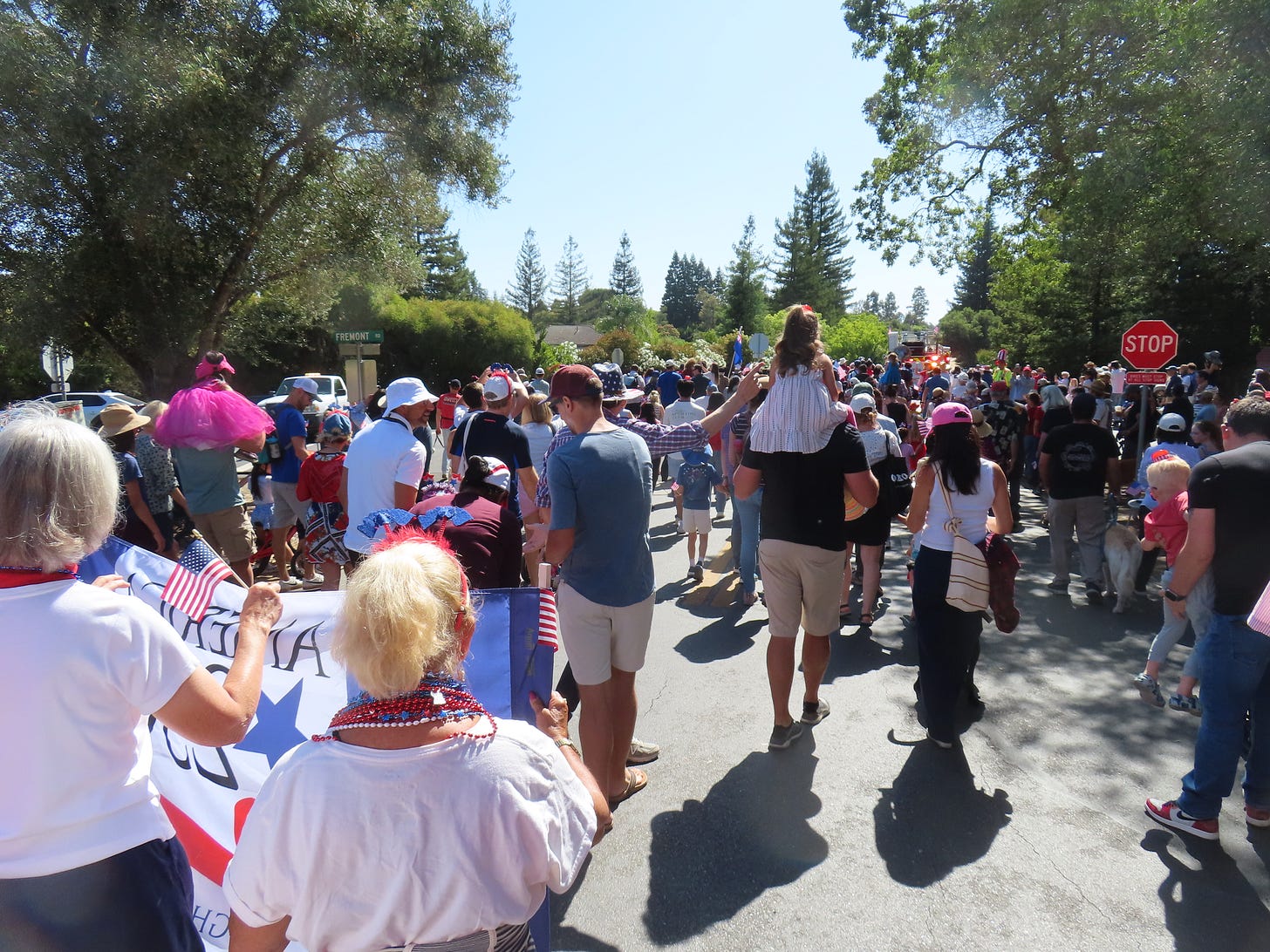


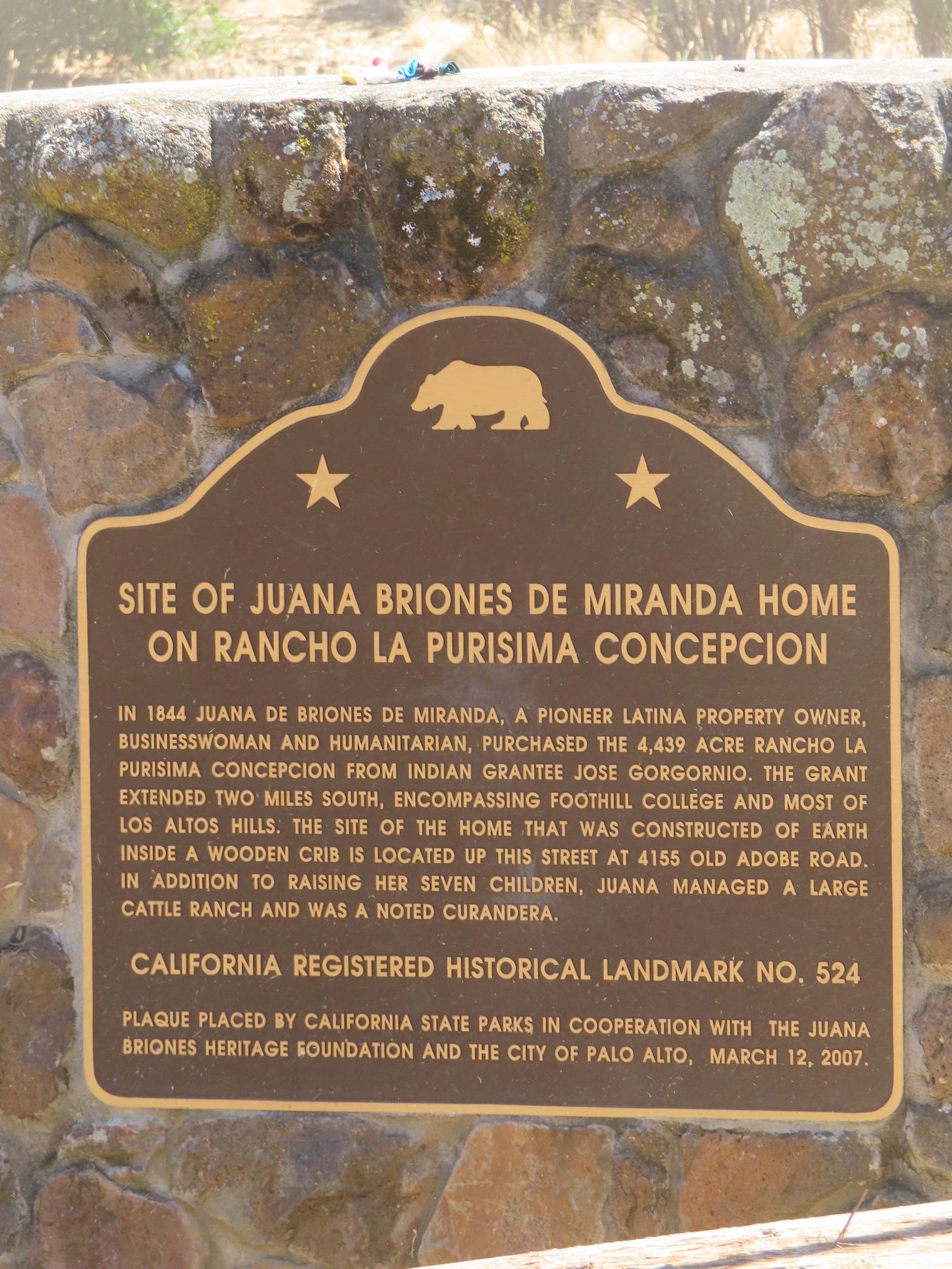




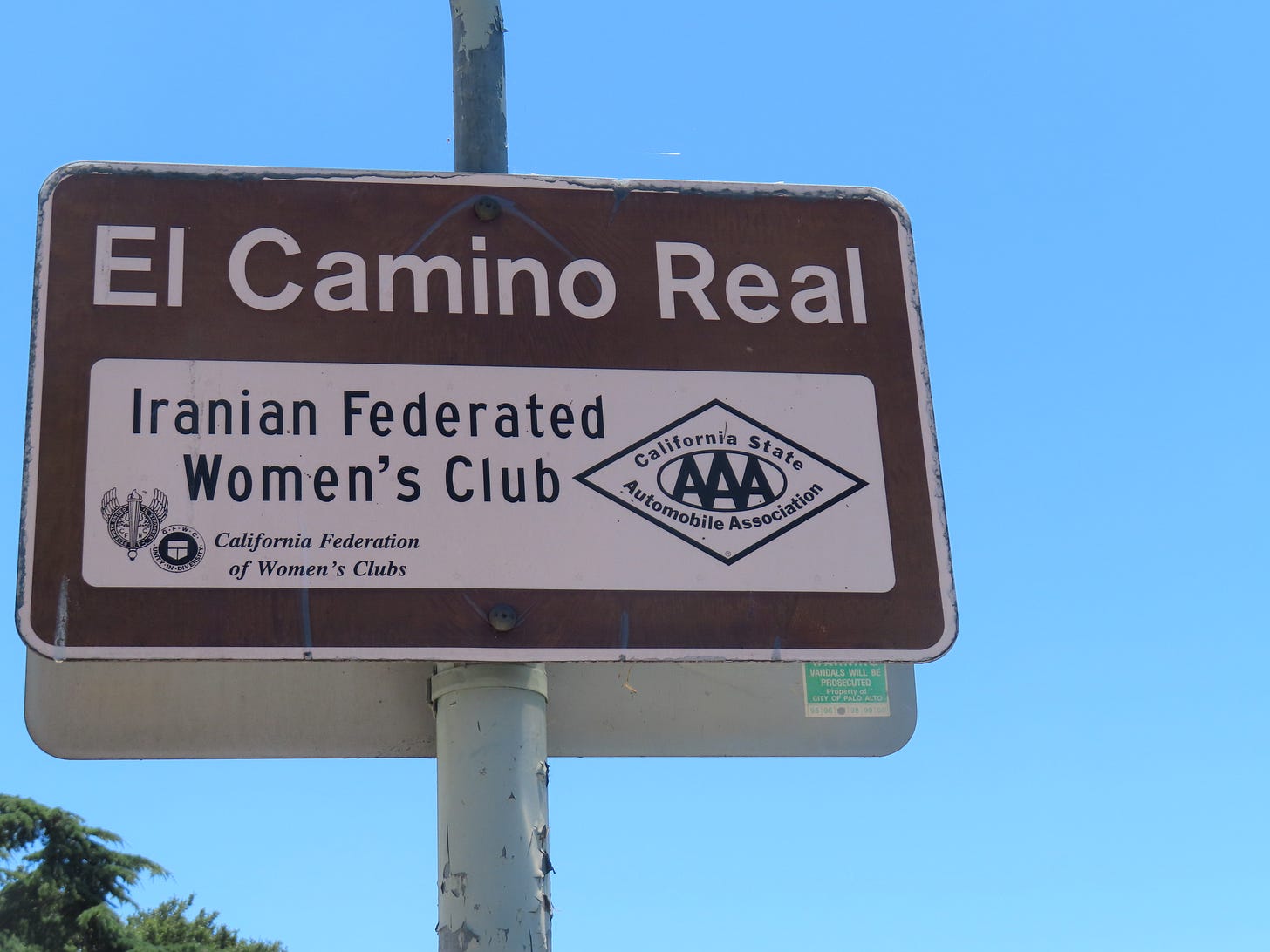


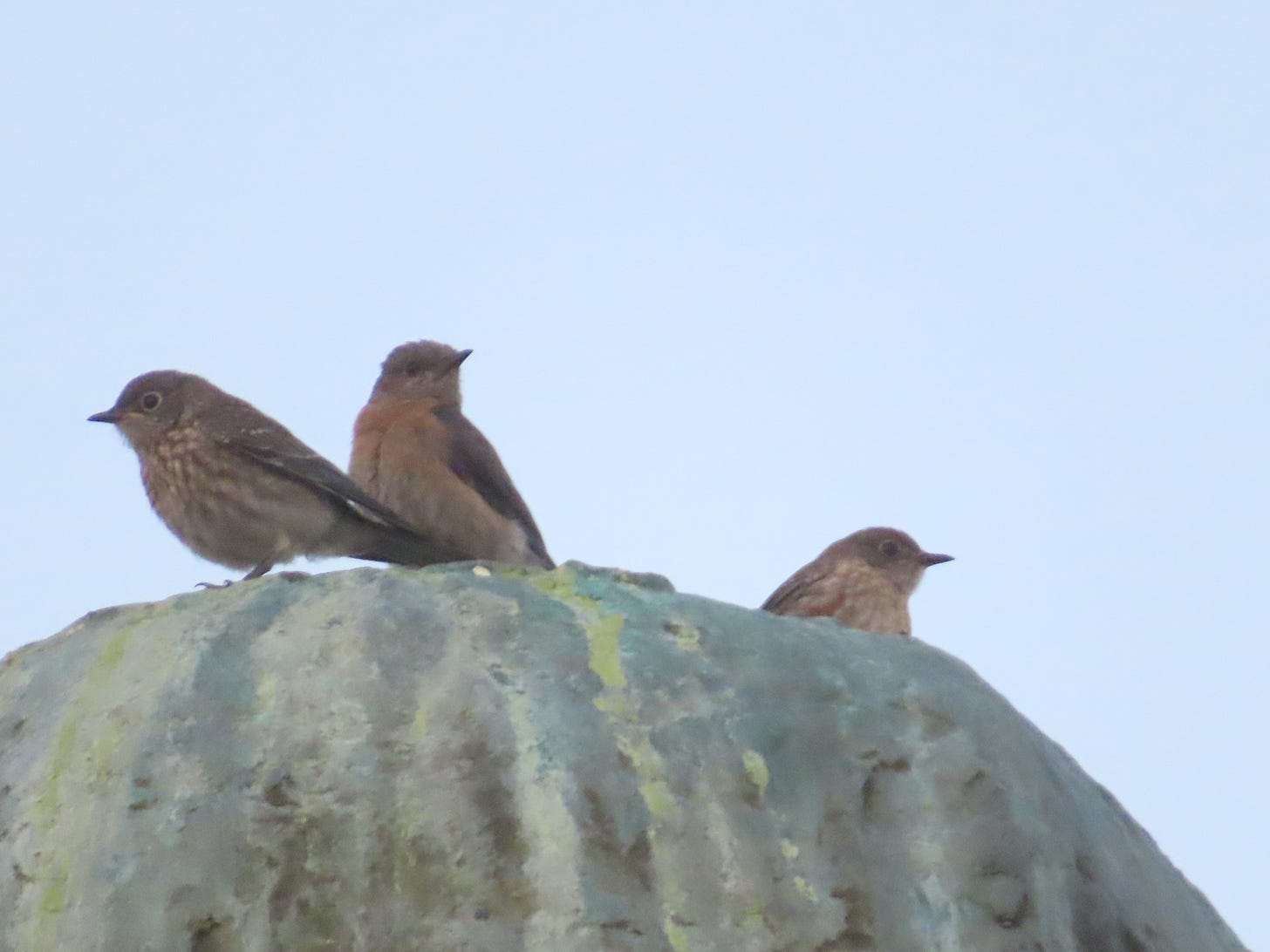
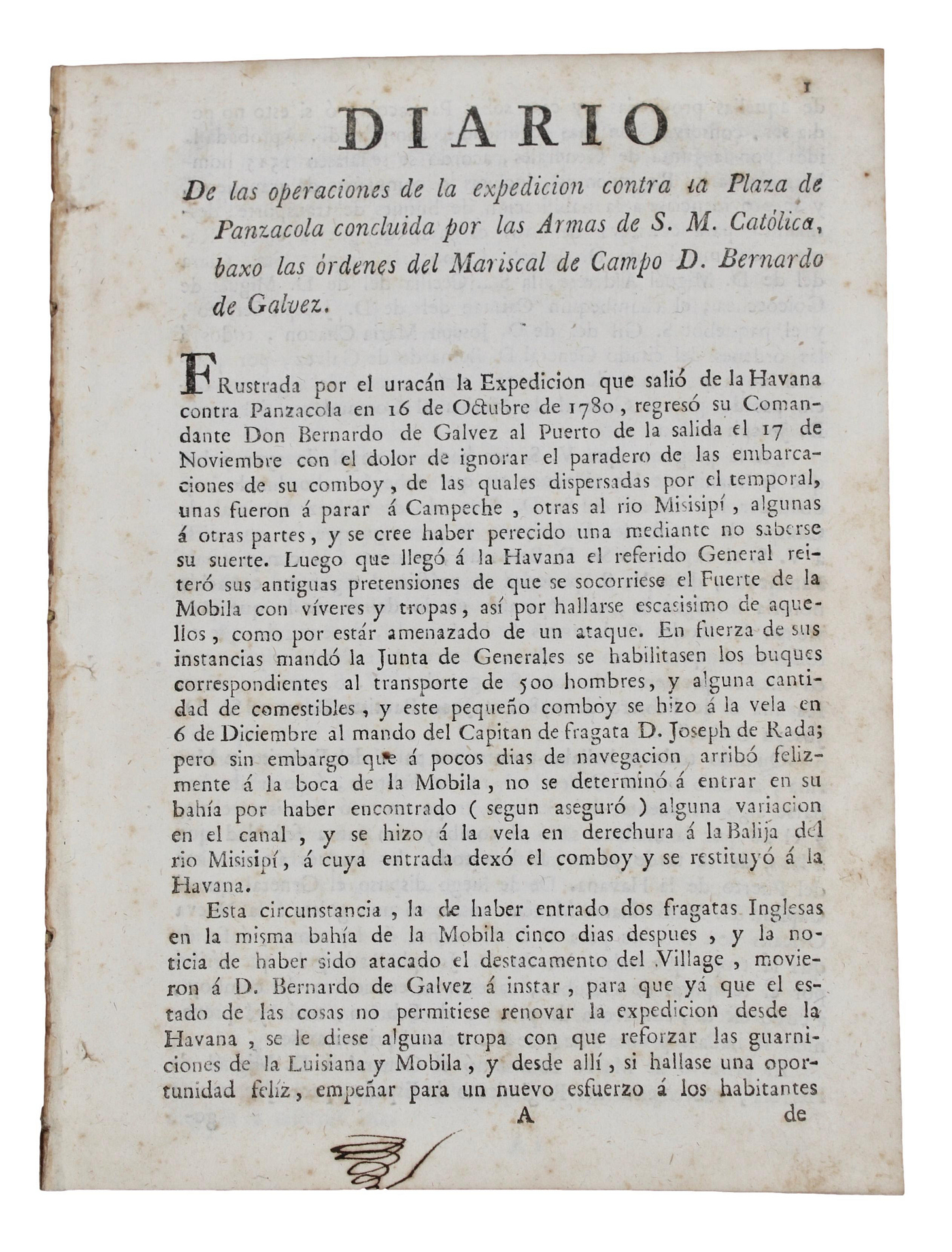
Excellent report, fascinating throughout.
About the Spanish in North America being "white"— it really is complicated. I don't know about De Anza in particular but in the 16th century many of the conquistadores married into what had been the Aztec aristocracy. (For example, Juan de Oñate, if I recall correctly. Oñate was the last conquistador, of the Kingdom of "New Mexico.") It seems to me that too many people in 21st century US apply ideas from textbooks about the US in the 19th century with its race laws to cultures and times where it doesn't quite add up that same way.